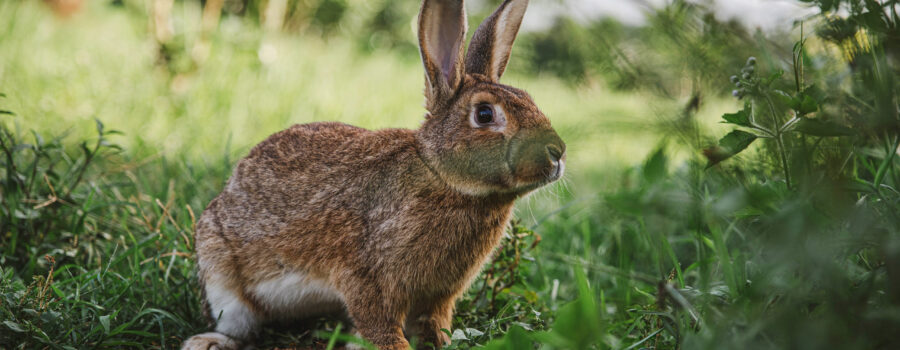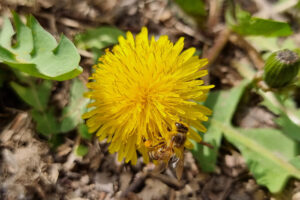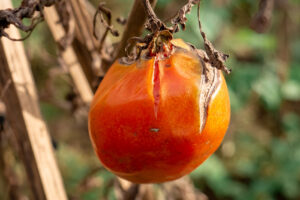We work hard on developing a lush food forest in anticipation of bountiful harvests. While we enjoy the process of attracting beneficial guests such as pollinators and decomposers, other wildlife also shows up and wreaks havoc. How can we protect all we’ve built without disrupting the natural balance?
Understanding Wildlife Pressure
Before implementing management strategies, it’s important to assess the type and extent of wildlife pressure in your food forest. There are a variety of pests in any given region, and their impact depends on factors such as food availability, habitat conditions, and seasonal changes.
- Deer can consume large amounts of foliage, damage bark by rubbing their antlers, and trample young plants.
- Armadillos primarily dig for insects and grubs, but can uproot young plants in the process.
- Raccoons are opportunistic feeders that love fruits, corn, and eggs.
- Rabbits primarily target tender shoots, bark, and leafy greens, often girdling young trees.
- Rodents (Pocket Gophers, Squirrels) may chew roots, bulbs, and bark, leading to plant damage and tree stress.
- Birds may eat fruits and seeds before they mature, especially in berry crops and orchards.

Here in our area, the critters that pester me the most are squirrels and armadillos. Squirrels are so destructive. I wouldn’t mind it quite as much if I felt it was out of necessity and that I was providing a helpless animal with food, but they often seem to do it out of spite — or maybe even just for kicks. I’ll find tender seedlings or new ginger sprouts gnawed off at ground level and left behind to wilt, or a nibble taken out of a tiny avocado that never had a chance to grow. I can bag strawberries on the vine, only to have the entire bag removed and left to rot a few yards away. And they dig, and dig … and dig … little holes all over the yard.
Overnight, armadillos rearrange the mulch, leaving furrows and ruts that I stumble through the next morning before I’m fully awake. (The one caught on our trail cam above even looks like it might have leprosy. Ugh!) They dig in search of insects, earthworms, and grubs — and while they don’t cause a huge amount of destruction, their burrowing can damage plant roots and leave a mess. Who wants to have to rake the mulch every morning?
How to Deter Armadillos
- Fencing: Install a fence at least 24 inches high and bury it 12–18 inches deep to prevent burrowing under.
- Garden Mesh or Netting: Place wire mesh around sensitive garden beds to block access.
- Reduce Food Sources: Armadillos dig for grubs and insects, so using beneficial nematodes to control soil pests can make your garden less appealing.
- Motion-activated lights, Noise, or Sprinklers: Motion-activated devices can startle and repel armadillos.
I know from experience that the armadillos avoid the front zones in our food forest where several motion lights are installed. They focus on the back of our property, where we have not yet added lights.
This year, I plan on growing more peppers and creating a spray to see if that will deter wildlife. There is also coyote and fox urine that is commercially available, although I have not tried them. Over the past couple of years, our neighborhood has quadrupled in size, but before it was fully developed, we had much more wildlife, including foxes and coyotes. I have not seen a fox since the new home building began, but even when they were around (and presumably urinating in the area), there was still plenty of armadillo activity. Maybe even more since there was more habitat. I still hear plenty of coyotes at night, but I doubt they’re discouraging the local armadillo population, so … not sure if buying urine is a valid suggestion.
Physical Barriers
One of the most effective ways to protect food forests from wildlife damage is through the use of physical barriers. While some barriers can be costly, they provide long-term protection with minimal maintenance.
Surprisingly, I have never seen a deer in our neighborhood. I know they are in the area because, sadly, some are killed on the highway just outside of our development. We live across from an 8,000-acre nature preserve, so hopefully most of them keep to the safety and bounty of that area.

Fencing Strategies
- Deer Fencing: A sturdy, 7- to 10-foot-high fence is one of the most reliable methods for keeping deer out. Mesh wire, electric fencing, or double-layer fencing can be effective deterrents.
- Rabbit-Proof Barriers: A 2- to 3-foot-high wire mesh fence with buried edges (at least 6 inches deep) helps prevent rabbits from digging under and accessing plants.
- Tree Guards & Tubes: Young trees are vulnerable to deer rubbing and rabbit gnawing. Installing plastic or wire tree guards around trunks can protect bark and allow the trees to mature safely.
- Raised Beds & Cages: Small plants, especially root vegetables and leafy greens, can be grown in raised beds with mesh coverings to deter rabbits and rodents.
Since I started using metal raised beds in a section of my yard, I have found them to greatly reduce annual crop destruction. While it doesn’t stop the squirrels from digging, it does seem to keep them from molesting seedlings, and it appears to eliminate rabbit and armadillo interference. I also use a moveable dog fence to protect my in-ground asparagus patch, or any area being pestered.
Plant-Based Deterrents
Certain plants naturally repel herbivores due to their strong scent, bitter taste, or toxic properties. Incorporating these plants into your food forest can help create a natural barrier against wildlife.
- Deer-Resistant Plants: Garlic, onions, lavender, mint, yarrow, and daffodils are known to deter deer due to their strong aroma.
- Rabbit-Repelling Plants: Marigolds, chives, and rosemary help keep rabbits at bay.
- Companion Planting: Mixing deterrent plants with susceptible crops can reduce browsing pressure while supporting biodiversity.
The rabbits love, love, love perennial peanut. Once I managed to get it established enough to withstand sharing, this seemed to occupy them and distract them from other plants. However, when I replaced the grass in my front lawn with perennial peanut, a rabbit hole appeared in the front yard, and the hole owner was brazen about grazing. The rosemary was, in that case, not a deterrent. I wouldn’t be surprised if it does help when mixed in with small plantings, though.
Habitat Modification & Wildlife Diversion
Creating an environment that discourages problematic wildlife while providing alternative food sources in non-critical areas can help minimize damage.

Wildlife Distraction Plantings
- Sacrificial Crops: Planting clover, perennial peanut, alfalfa, or native grasses away from the main food forest can attract deer and rabbits to alternative food sources.
- Designated Wildlife Zones: Establishing specific areas with native shrubs, wildflowers, and fruiting trees can encourage wildlife to forage away from cultivated areas.
The perennial peanut ground cover does seem to distract rabbits from plants I want to eat myself (and it grows back pretty quickly, once established). The dark back zone of our yard is where I’d prefer to keep the armadillos, and by putting out dried corn cobs for the squirrels in the back zones, it does appear to keep them somewhat busy for at least part of the day. I’m willing to make those small sacrifices to keep the mayhem at bay.
Scent & Sound Repellents
Non-invasive repellents can be used to deter wildlife from entering a food forest.
- Soap Bars & Human Hair: Hanging scented soap or scattering human hair near plants can deter deer.
- Predator Urine: Coyote, fox, or bobcat urine (available commercially) can trick herbivores into believing a predator is nearby.
- Motion-Activated Devices: Water sprayers, flashing lights, and ultrasonic repellents can discourage nighttime browsing.
- Wind Chimes: Creating noise disturbances in critical growing areas can help deter skittish animals like deer.

Encouraging Natural Predators
A well-balanced ecosystem includes natural predators that help keep herbivore populations in check.
- Encourage Birds of Prey: Installing owl boxes or perches for hawks can help control rodent populations.
- Foxes & Coyotes: While larger predators can sometimes pose risks to small livestock, they play a key role in managing rabbits and rodents.
- Snakes: These small predators naturally hunt mice, voles, and rabbits, reducing their impact on crops.
Circle of life, my friend. Enough said.

Monitoring & Adaptive Management
- Trail Cameras: Installing motion-activated cameras helps identify which animals are causing damage and when they are active.
- Tracking & Scouting: Observing footprints, droppings, and damage patterns can inform future management adjustments.
- Seasonal Adjustments: During peak foraging seasons, increasing deterrents or reinforcing barriers can prevent excessive damage.
Trail cams (like this) are extremely helpful! So much happens at night that would surprise (or entertain ; ) you. I have never seen a raccoon in our yard during the day, or evidence of outdoor trash can raiding, or paw prints, so I was VERY surprised to find this on the trail cam closest to our house. I suspected squirrels were digging all the little holes in our yard. Nope! While plenty are, they obviously have partners in crime. Trail cams are great for letting you know what you’re dealing with.
Ethical & Sustainable Wildlife Management
Maintaining a healthy balance between wildlife and food production should always prioritize ethical, sustainable, and non-lethal methods. Killing or relocating animals can have unintended ecological consequences and is often less effective than habitat management and deterrence techniques. Again, always try to work with nature, not against it.
Conclusion
Combining multiple strategies allows for long-term sustainability without over-reliance on a single method. By utilizing physical barriers, plant-based deterrents, and habitat modifications, it is possible to minimize damage while maintaining ecological balance. The goal is not to eliminate wildlife but to create an environment where food production and biodiversity coexist harmoniously. With careful planning and adaptive management, food forests can thrive while supporting a diverse and resilient ecosystem.
Dealing with insect pests?
Proven Natural Methods to Zap Pest Invasions









Leave a Reply
Your email is safe with us.